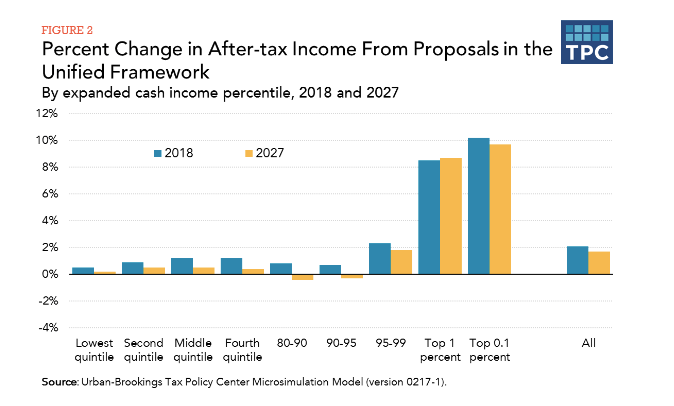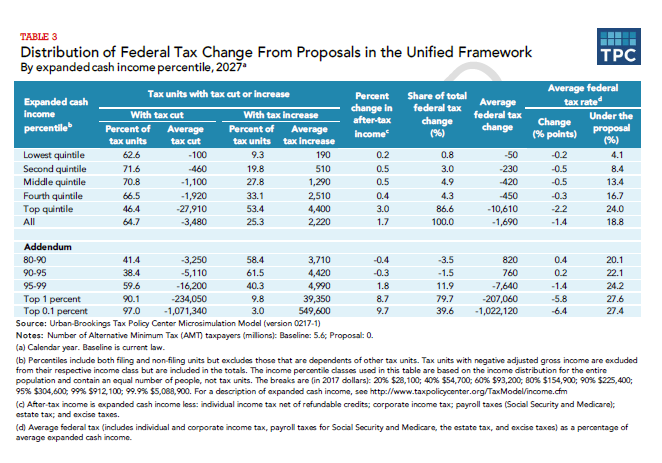President Donald Trump and senior White House officials would be quick to tell you that they designed their tax plan with the “middle class in mind.”
Trump pitched the plan during a speech at the National Association of Manufacturers in Washington, DC Friday afternoon. He said this new framework “ensures that the benefits of tax reform go to the middle class, not the highest earner.”
A new study details the absurdity of this claim.
According to an analysis from the Brookings Tax Policy Center released Friday, the only group seeing the “massive” tax breaks that were promised for the middle class are wealthy Americans.
The Tax Policy Center found that in 2018, taxpayers in the top 1 percent (which includes incomes of above $730,000), would receive roughly 53 percent of the total tax benefit and their after-tax income would increase an average of 8.5 percent. Meanwhile, taxpayers in the bottom 95 percent would see average after-tax incomes increase between 0.5 and 1.2 percent.

And this just in the first year. Significant tax cuts for the rich would continue into 2027, when the top 1 percent would get nearly 80 percent of tax cuts, averaging more $200,000 dollars each. The top .1 percent would get nearly 40 percent of the tax cuts, averaging more than $1 million dollars each. All groups in the bottom 80 percent can expect to receive a meager after-tax income increase of 0.5 percent or less.
In 2018, 12 percent taxpayers will get a tax hike and by 2027, 25 percent will. More than a third of taxpayers with incomes between $150,000-$300,000 would be paying higher taxes in 2018, and 60% of them by 2027. The paper notes that, “the number of taxpayers with a tax increase rises over time.”
After the plan has fully taken effect in 2027, taxpayers in the bottom 95 percent will see a 0.5 percent increase in after-tax income, while the top 1 percent will see after-tax income increase of 8.7 percent. The top 1 percent will get an average tax cut of $1,022,120, while the middle 20 percent will get an average cut of $420 and the bottom 20 percent just $50.

While the framework leaves out some specific aspects of tax plan, the Tax Policy Center’s analysis is based off both the “Unified Framework for Fixing Our Broken Tax Code” proposed by the White House and “Big Six” Republican congressional leadership and previous GOP proposals like the House Republican leadership’s “A Better Way Plan.”
Overall, the plan increases individual income taxes by $470 billion; cuts business taxes by $2.6 trillion; and cuts the estate tax by $240 billion. The analysis shows this is mostly a corporate tax cut, with some income cuts targeted at wealthy taxpayers tacked on.
These massive tax cuts for corporations, wealthy individuals, and their estates are being paid for by raising taxes on lower and middle income individuals, all while adding to the deficit, because these tax cuts don’t come cheap. The plan will add a total of $5.6 trillion dollars in debt: $2.4 trillion in the first decade and $3.2 trillion the next.
